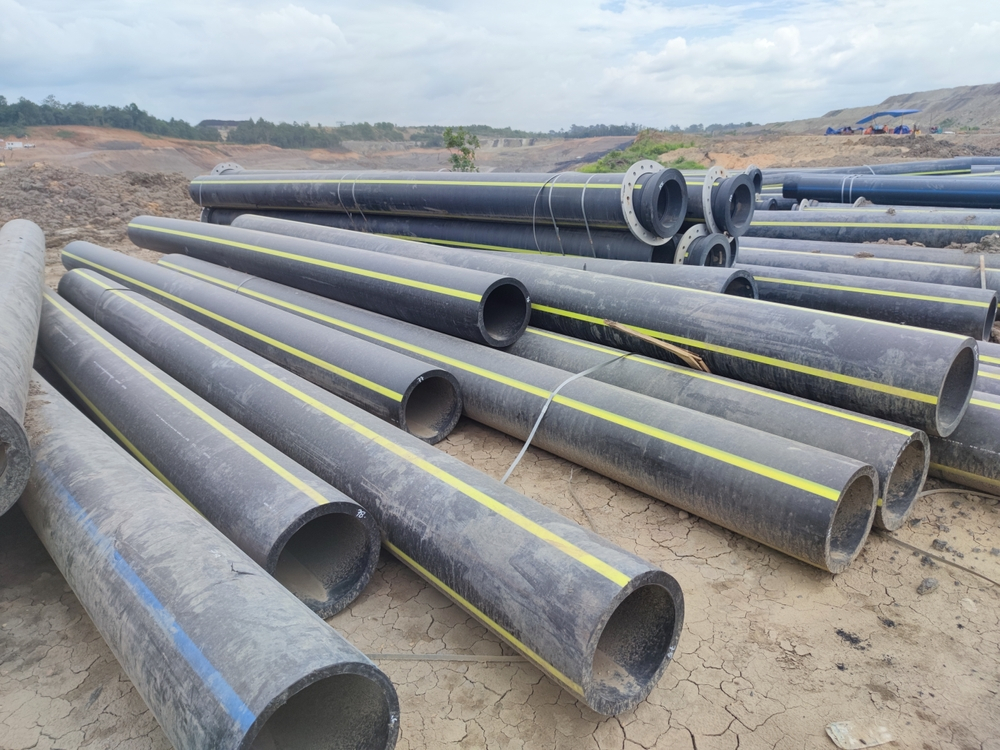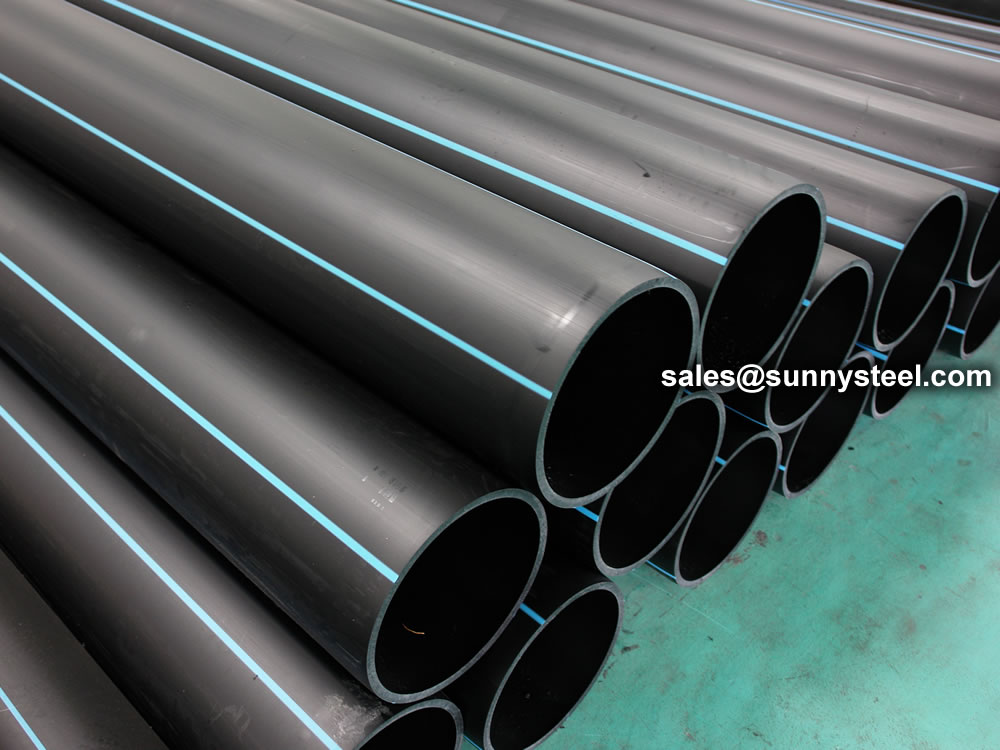Discover the Production Refine Behind High-Quality HDPE Pipeline and Its Applications
The manufacturing procedure of top quality HDPE pipes is complex and systematic. It starts with the choice of raw products that improve efficiency. Following this, ethylene undertakes polymerization to create material, which is then shaped through extrusion. Quality control is vital, making certain that the last product meets strict standards. The journey of HDPE pipelines does not end with production. Their applications throughout numerous sectors expose a wider importance worth analyzing.
Understanding HDPE: Qualities and Advantages

High-density polyethylene (HDPE) is a flexible thermoplastic recognized for its longevity and resistance to different ecological aspects. This material shows exceptional tensile strength, making it appropriate for demanding applications. Its low-density framework adds to a light-weight product, facilitating convenience of handling and installation. HDPE likewise showcases impressive resistance to chemicals, which decreases deterioration when subjected to rough materials.
The product's reduced wetness absorption further improves its long life, making it suitable for use in pipelines and tank. Furthermore, HDPE is resistant to ultraviolet (UV) radiation, making certain that products preserve their integrity also when exposed to sunlight. In addition, its adaptability permits the production of elaborate shapes without endangering strength. The environmentally friendly nature of HDPE, usually derived from recycled products, contributes to its appeal, advertising sustainable practices in production. In general, these buildings and benefits make HDPE a favored selection for different industrial and customer applications.
Raw Material Selection for HDPE Manufacturing
The choice of basic materials for HDPE production is important to verify the last product meets the desired requirements and quality requirements. High-density polyethylene (HDPE) is mostly created from polymerized ethylene, stemmed from fossil gas such as all-natural gas or petroleum. The high quality of these feedstocks considerably affects the mechanical and thermal properties of the last HDPE.
Additives additionally play a substantial function in boosting HDPE's performance, including anti-oxidants, UV stabilizers, and colorants, which boost longevity and resistance to ecological elements. The choice process need to consider not only the chemical make-up of the raw products however also their handling attributes to guarantee efficient production.
Moreover, the sourcing of resources need to prioritize sustainability and conformity with ecological policies, as accountable practices are crucial in today's market. Ultimately, careful raw material option lays the foundation for producing top notch HDPE pipelines ideal for varied applications.
The Extrusion Process: Shaping HDPE Pipe
The extrusion procedure plays a crucial duty in forming HDPE pipes, starting with thorough product preparation techniques that guarantee optimal flow and consistency. Equally crucial is the layout of the die, which straight influences the last dimensions and surface area quality of the pipeline. Together, these variables contribute significantly to the efficiency and high quality of HDPE pipeline production.
Product Preparation Strategies
Efficient manufacturing of HDPE pipelines begins with precise product preparation methods, especially the extrusion process. Throughout this phase, high-density polyethylene material is very first dried to get rid of moisture, ensuring suitable circulation attributes. The material is after that fed into the extruder, where it goes through heating and melting, transforming right into a thick state. This heating procedure is thoroughly regulated to keep the product's integrity and efficiency. The molten HDPE is forced with a die, shaping it right into a continual pipeline form. Appropriate temperature administration throughout extrusion is important, as it directly influences the product's residential properties and the end product quality. As soon as shaped, the HDPE pipe is cooled down and reduced to defined lengths, ready for subsequent processing and applications.
Die Style Value
Accuracy in die style plays a vital duty in the extrusion process of HDPE pipes. The die functions as the final shaping device, directly affecting the pipe's measurements, wall surface density, and surface area coating. A properly designed die assurances consistent product circulation, lowering defects such as irregularities and weak points. The geometry of the die have to be maximized to accommodate the particular residential properties of HDPE, including its viscosity and thermal actions during extrusion. In addition, the cooling rate of the material as it passes via the die can significantly impact the pipe's architectural stability. Investing in advanced die innovation is vital for suppliers aiming to produce high-grade HDPE pipelines that satisfy sector requirements and customer assumptions.
Quality Assurance Steps in HDPE Manufacturing
Numerous elements influence the high quality of HDPE pipe manufacturing, reliable quality control measures are crucial to ensure uniformity and integrity in the final product (hdpe pipe in stock Midland TX). Trick quality assurance methods consist of strenuous material inspection, verifying that the raw polyethylene meets well established criteria for purity and density. During the extrusion process, parameters such as temperature level, stress, and cooling time are closely kept track of to maintain dimensional precision and structural honesty
Additionally, post-production testing is important; producers often perform hydrostatic tests to assess the pipeline's strength and resistance to stress. Visual inspections for surface area flaws even more enhance top quality assurance. Certification from pertinent standards companies, like ASTM or ISO, supplies an extra layer of trustworthiness. By executing these comprehensive top quality control procedures, manufacturers can lessen problems, boost performance, and make certain that the HDPE pipelines meet the details requirements of different applications, inevitably resulting in consumer complete satisfaction and count on the product.
Applications of HDPE Pipe Throughout Industries
HDPE pipelines are utilized across numerous sectors because of their durability and adaptability. In water circulation systems, they guarantee efficient shipment, while in wastewater monitoring, they provide reputable options for waste transportation. Additionally, agricultural irrigation networks gain from HDPE's resistance to deterioration and flexibility, making it an ideal selection for contemporary farming techniques.

Water Circulation Equipments
A considerable number of industries rely upon high-density polyethylene (HDPE) pipes for effective water circulation systems. Understood for their sturdiness and resistance to rust, HDPE pipes are commonly made use of in local supply of water networks, farming irrigation, and commercial applications. Their lightweight nature promotes simple handling and installation, lowering labor costs and time. In addition, HDPE pipes can suit various pressure levels, making them ideal for both reduced and high-pressure systems. Pipe Manufacturing Midland TX. The flexibility of the material permits smooth integration right into existing infrastructure, decreasing the demand for extensive excavation. HDPE's resistance to chemical seeping guarantees that the water supplied remains risk-free and tidy, making it an optimal selection for maintaining the high quality of safe and clean water across different fields.
Wastewater Management Solutions
Efficient water circulation systems also lead the way for innovative wastewater administration remedies, where high-density polyethylene (HDPE) pipes play a substantial duty. Renowned for their longevity and resistance to corrosion, HDPE pipes are suitable for transferring wastewater in different setups. Their adaptability enables easy setup in complicated settings, reducing the demand for substantial excavation. Additionally, HDPE's smooth interior surface area reduces friction, boosting flow prices and effectiveness. These pipelines are also resistant to chemical leaching, ensuring that contaminants do not endanger the surrounding atmosphere. Industries, communities, and therapy centers progressively depend on HDPE pipelines for their integrity and durability, making them a preferred option for modern wastewater monitoring systems. This versatility highlights the critical relevance of HDPE pipes throughout countless applications.
Agricultural Watering Networks
Agricultural watering networks benefit significantly from making use of high-density polyethylene (HDPE) pipelines, which provide efficient and trusted water shipment to plants. HDPE pipes are light-weight, making them easy to carry and mount, while their flexibility allows for numerous setups in diverse surfaces. These pipelines demonstrate excellent resistance to rust, chemicals, and UV radiation, making certain durability in harsh agricultural atmospheres. Additionally, their smooth indoor surface area minimizes friction loss, maximizing water circulation and decreasing power prices related to pumping. The long life of HDPE pipelines, usually exceeding 50 years, contributes to lower maintenance and substitute expenses. Consequently, farmers progressively rely upon HDPE pipes to boost watering performance and promote lasting farming practices, ultimately resulting in enhanced crop yields and source preservation.
Future Fads in HDPE Pipe Technology
As the need for sustainable and reliable facilities expands, developments in HDPE pipeline technology are positioned to transform different sectors. Arising trends consist of the integration of wise technologies, such as sensing units and IoT capacities, which help with real-time surveillance of pipeline conditions, decreasing maintenance prices and protecting against leakages. In addition, the development of advanced production strategies, such as 3D printing, is allowing the manufacturing of complicated, personalized pipeline layouts that satisfy particular job requirements.
The focus on recycling and circular economy practices is driving the development of HDPE pipes made from recycled materials, boosting sustainability. Enhanced jointing techniques, such as electro-fusion and mechanical installations, are additionally boosting installment efficiency and reliability. The expanding emphasis on ecological guidelines is pushing manufacturers to take on greener manufacturing processes, guaranteeing that HDPE pipes not only fulfill sector requirements however also cultivate an even more sustainable future for facilities development.
Regularly Asked Inquiries
How Does HDPE Contrast to Various Other Plastic Materials?
HDPE outmatches numerous various other plastic products relating to here longevity, chemical resistance, and flexibility. Its reduced thickness and high tensile stamina make it optimal for different applications, usually going beyond options in both performance and longevity.
What Are the Ecological Impacts of HDPE Production?
The ecological impacts of HDPE production include greenhouse gas emissions, power consumption, and potential contamination from manufacturing procedures. Furthermore, improper disposal can bring about soil and water contamination, elevating worries about lasting environmental effects.
Can HDPE Pipes Be Reused?
Yes, HDPE pipes can be reused. Lots of facilities approve used HDPE for handling, transforming it right into new items. This recycling contributes to sustainability initiatives, reducing plastic waste while conserving sources and energy in the production cycle.
What Is the Lifespan of HDPE Water Lines?

Just How Do Temperature Level Variations Affect HDPE Pipe Performance?
Temperature variations significantly affect HDPE pipe performance, impacting versatility and toughness. High temperature levels can lead to softening, while reduced temperature levels might create brittleness, inevitably influencing the pipeline's resilience and suitability for different applications in diverse atmospheres.